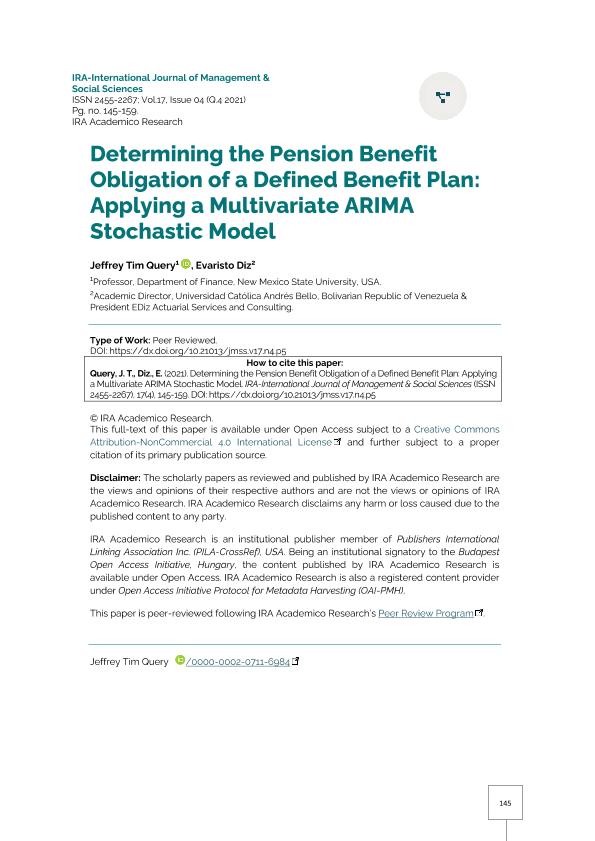Determining the pension benefit obligation of a defined benefit plan : applying a multivariate ARIMA stochastic model

Contenido multimedia no disponible por derechos de autor o por acceso restringido. Contacte con la institución para más información.
| Tag | 1 | 2 | Valor |
|---|---|---|---|
| LDR | 00000cab a22000004b 4500 | ||
| 001 | MAP20220029346 | ||
| 003 | MAP | ||
| 005 | 20221025141330.0 | ||
| 008 | 221025e2021 usa|| p |0|||b|eng d | ||
| 040 | $aMAP$bspa$dMAP | ||
| 084 | $a6 | ||
| 100 | 1 | $0MAPA20220009065$aQuery, Jeffrey Tim | |
| 245 | 1 | 0 | $aDetermining the pension benefit obligation of a defined benefit plan$b: applying a multivariate ARIMA stochastic model$cJeffrey Tim Query, Evaristo Diz |
| 520 | $aIn this study, we examine the robustness of fit for a multivariate and an autoregressive integrated moving average model to a data sample time series type. The sample is a recurrent actuarial data set for a 10-year horizon. We utilize this methodology to contrast with stochastic models to make projections beyond the data horizon. Our key results suggest that both types of models are useful for making predictions of actuarial liability levels given by PBO Projected Benefit Obligations on and off the horizon of the sample time series. As we have seen in prior research, the use of multivariate models for control and auditing purposes is widely recommended. Fast and reliable statistical estimates are desirable in all cases, whether for audit purposes or to verify and validate miscellaneous actuarial results | ||
| 650 | 4 | $0MAPA20080592455$aPlanes de pensiones | |
| 650 | 4 | $0MAPA20130014791$aProyecciones | |
| 650 | 4 | $0MAPA20080604721$aAnálisis multivariante | |
| 650 | 4 | $0MAPA20080579258$aCálculo actuarial | |
| 650 | 4 | $0MAPA20080586447$aModelo estocástico | |
| 700 | 1 | $0MAPA20080216702$aDiz Cruz, Evaristo | |
| 773 | 0 | $tIRA-International Journal of Management & Social Sciences$gVol.17, Issue 04 (Q.4 2021) ; p. 145-159 |

